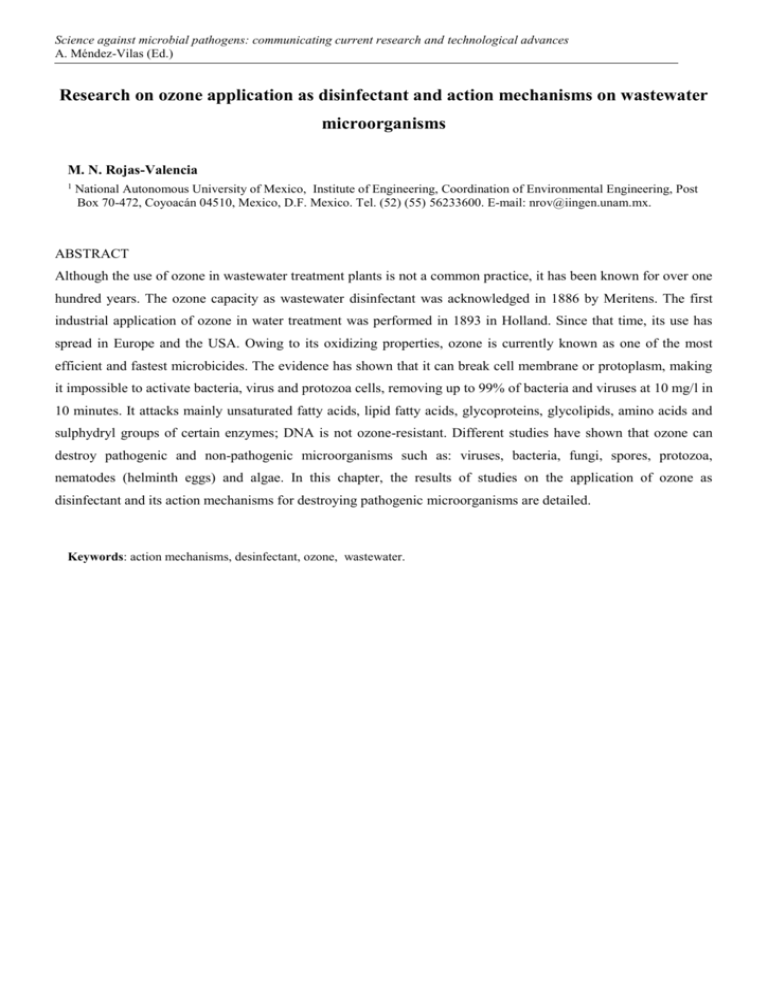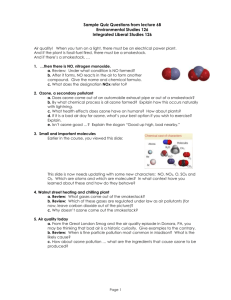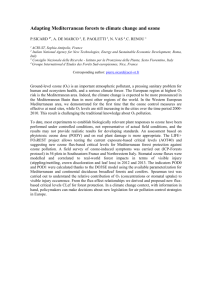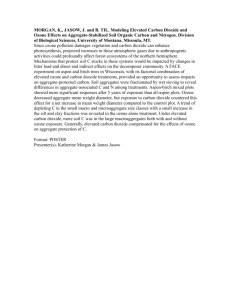Template for abstracts
advertisement

Science against microbial pathogens: communicating current research and technological advances A. Méndez-Vilas (Ed.) Research on ozone application as disinfectant and action mechanisms on wastewater microorganisms M. N. Rojas-Valencia 1 National Autonomous University of Mexico, Institute of Engineering, Coordination of Environmental Engineering, Post Box 70-472, Coyoacán 04510, Mexico, D.F. Mexico. Tel. (52) (55) 56233600. E-mail: nrov@iingen.unam.mx. ABSTRACT Although the use of ozone in wastewater treatment plants is not a common practice, it has been known for over one hundred years. The ozone capacity as wastewater disinfectant was acknowledged in 1886 by Meritens. The first industrial application of ozone in water treatment was performed in 1893 in Holland. Since that time, its use has spread in Europe and the USA. Owing to its oxidizing properties, ozone is currently known as one of the most efficient and fastest microbicides. The evidence has shown that it can break cell membrane or protoplasm, making it impossible to activate bacteria, virus and protozoa cells, removing up to 99% of bacteria and viruses at 10 mg/l in 10 minutes. It attacks mainly unsaturated fatty acids, lipid fatty acids, glycoproteins, glycolipids, amino acids and sulphydryl groups of certain enzymes; DNA is not ozone-resistant. Different studies have shown that ozone can destroy pathogenic and non-pathogenic microorganisms such as: viruses, bacteria, fungi, spores, protozoa, nematodes (helminth eggs) and algae. In this chapter, the results of studies on the application of ozone as disinfectant and its action mechanisms for destroying pathogenic microorganisms are detailed. Keywords: action mechanisms, desinfectant, ozone, wastewater.











